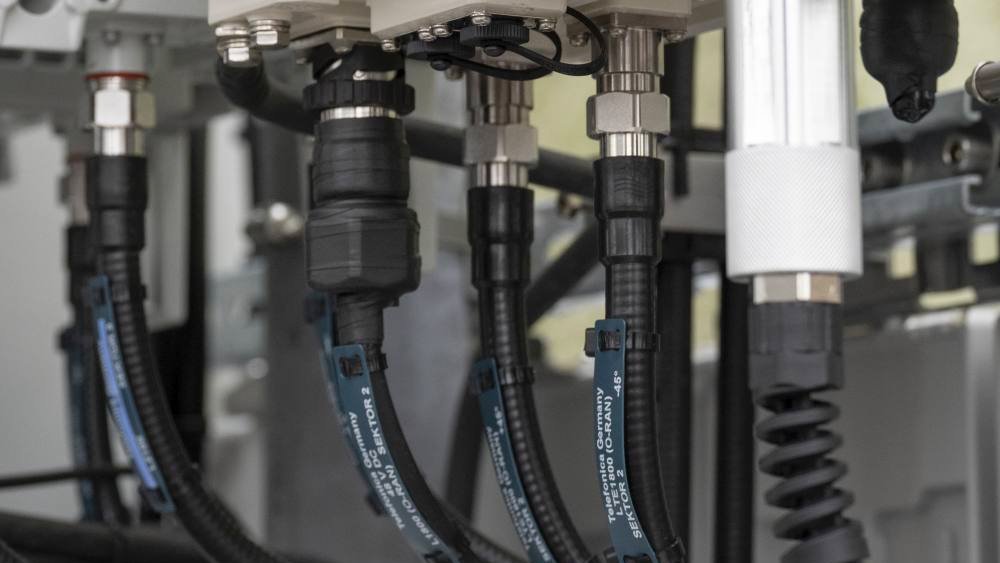Mobile networks: the federal government and the industry rely on Open RAN
Source: Heise.de added 21st Jan 2021The federal government is promoting the further development of the open mobile communications standard Open RAN (Open Radio Access Network) as part of the Corona economic stimulus package decided last summer with around 2 billion euros. According to media reports, the funding is now to be distributed by four ministries.
Accordingly, the research ministry 635 million euros ready, the Ministry of Transport 625 million, the Ministry of Economic Affairs 590 Millions and the Ministry of the Interior 150 Millions. First, 15 projects are planned for funding, reports the Handelsblatt.
More flexibility Network operators see Open RAN as an opportunity to become more independent from the oligopoly of network equipment providers and to gain more flexibility in network expansion. When setting up a cellular network, there is no getting around the major suppliers Huawei, Ericsson, Nokia and ZTE, who sell proprietary technology from the antenna to the core network.
With the increasing skepticism of the governments towards Chinese suppliers, this selection threatens to become even smaller in the future. This is another reason why the network operators are promoting the development of Open RAN in the O-RAN Alliance they founded. At the same time, the Telecom Infra Project (TIP) is working with numerous hardware manufacturers on Open RAN.
More virtualization Open RAN promises to virtualize at least parts of the functions previously performed by proprietary hardware as software and to run them on standard hardware. For example, the part of a conventional base station that processes the signals coming from the antenna and forwards them to the core network can be virtualized with Open RAN. In mobile communications, a development begins that is already well advanced in the fixed network area.
Network operators see the advantage of an open standard with defined interfaces as one of the advantages that they can use ready-made solutions from various providers. As a rule, virtualized network components can also be commissioned and updated more quickly. “We will be able to integrate new services into the network much faster,” says Telefónica CTO Mallik Rao.
Advantages outweigh However, components from different manufacturers must first be coordinated with one another and integrated into a running network with proprietary hardware. That is a lot of work for the network operators who otherwise do the equipment. But companies are willing to do so because the advantages of Open RAN outweigh them.
More competition should also be good for the industry. “Open RAN could also strengthen the competition for the best technology in mobile radio stations,” says Vodafone boss Hannes Ametsreiter. While the network operators are also expecting a cost advantage from more competition, the Federal Government sees an opportunity above all for German companies to get a foot in the door again. This should now be promoted.
Open RAN is not yet ready to be used on a broad front in a large cellular network. The development is not yet mature for all radio standards and frequencies. “Open RAN is still in its infancy”, summarizes Ametsreiter. Telefónica CEO Markus Haas estimates that the standard is ready for productive use from around 2025. But there are already first experiments.
On air Telefónica Deutschland uses Open RAN with software from Altiostar first O2 antenna locations in Landsberg, Bavaria, in LTE live operation. Hardware from Dell, Intel, Supermicro and Xilinx is used here; The Japanese NEC group is on board as a system integrator. From autumn, the network operator plans to use Open RAN on a larger scale in the O2 network at around 1000 antenna locations.
Telekom also has Plans. In the course of the year Neubrandenburg is to be developed as a model city for Open RAN. Telekom wants to turn the small town in Mecklenburg-Western Pomerania into an “O-RAN-City”, says Claudia Nemat, chief technology officer. Nokia is also on board. The traditional outfitters may not be thrilled that they are losing part of their business with Open RAN, but they will have to go with it.
(vbr)
brands: Best Boss cellular Chief Core Corona Dell First HUAWEI Intel It Million Mobile NEC New Nokia One Solutions Supermicro Telecom Telekom Vodafone XILINX ZTE media: Heise.de keywords: Mobile Software
Related posts
Notice: Undefined variable: all_related in /var/www/vhosts/rondea.com/httpdocs/wp-content/themes/rondea-2-0/single-article.php on line 88
Notice: Undefined variable: all_related in /var/www/vhosts/rondea.com/httpdocs/wp-content/themes/rondea-2-0/single-article.php on line 88
Related Products
Notice: Undefined variable: all_related in /var/www/vhosts/rondea.com/httpdocs/wp-content/themes/rondea-2-0/single-article.php on line 91
Warning: Invalid argument supplied for foreach() in /var/www/vhosts/rondea.com/httpdocs/wp-content/themes/rondea-2-0/single-article.php on line 91
